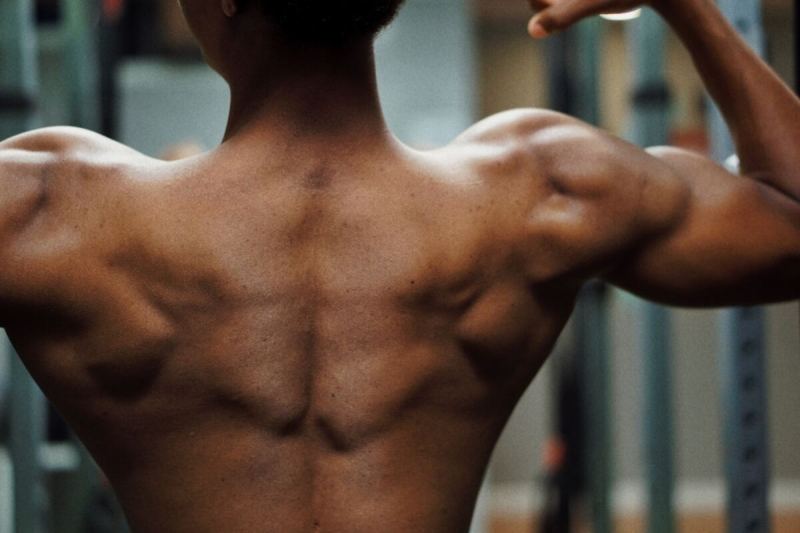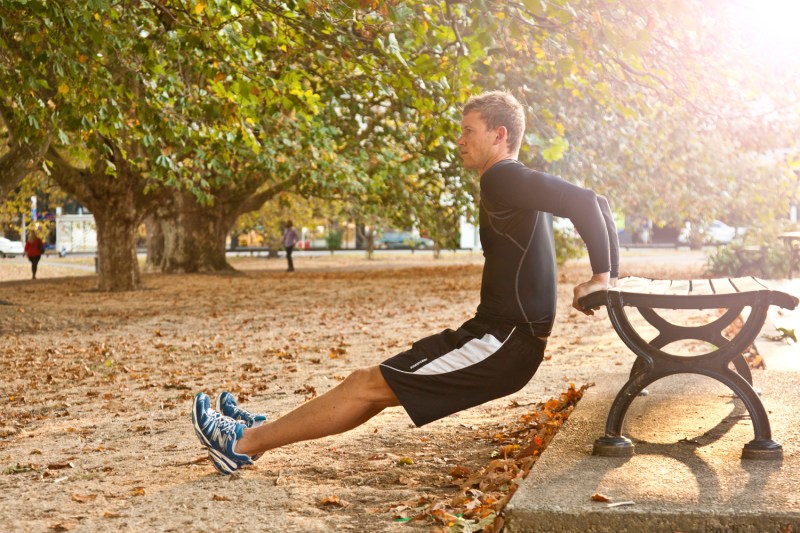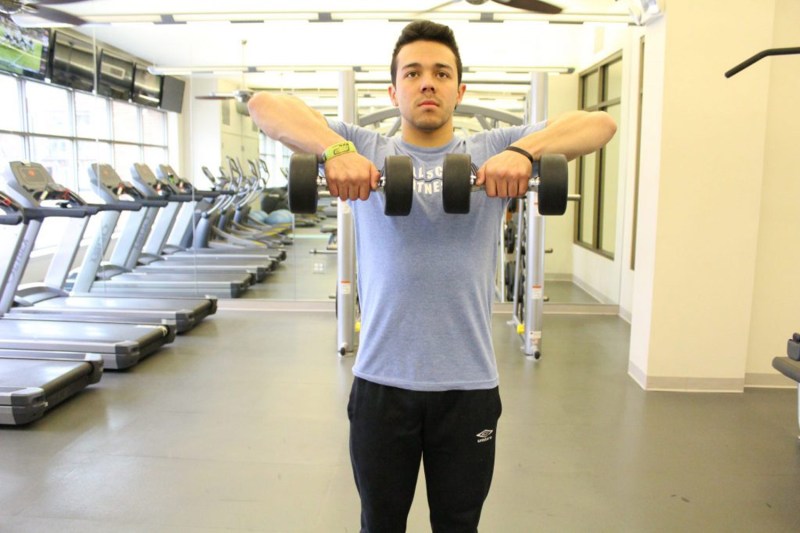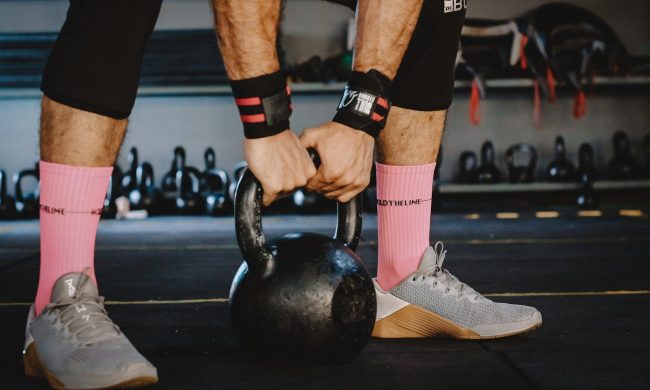
The rotator cuff is a group of muscles and tendons in the shoulder joint. This area is responsible for maintaining the shoulder’s stability and allowing for smooth movement. However, the rotator cuff is also prone to injury, especially when performing certain exercises that place stress on the shoulder joint. Rotator cuff tears and injuries can be painful and significantly impact daily activities. They can set you back in your pursuit of certain fitness goals and even lead to burnout.
It’s essential to be aware of which exercises may cause rotator cuff injuries. Doing those injury-prone exercises may be safe with proper form, and taking time to rest and recover will help to prevent injury as well. Still, it’s usually best to choose exercises that are less likely to lead to injury instead of just trying to mitigate the risks.
Potential injury cause: Overhead press

The overhead press is a popular exercise that targets the shoulders, but it can also put significant strain on the rotator cuff, leading to injury. This exercise involves lifting weights above the head, which can cause the shoulder joint to become unstable and lead to a rotator cuff tear. Additionally, the repetitive nature of the exercise and the use of heavy weights can cause chronic shoulder pain and inflammation.
What to do instead: Lateral raises
Lateral raises are a great alternative to overhead presses, as they effectively target the shoulder muscles without placing undue stress on the rotator cuff. This exercise involves lifting weights out to the side, keeping the elbows slightly bent, and the palms facing down.
Since the weights are at the end of your arms instead of right next to the shoulders, there’s a leverage effect. A smaller weight will give your shoulders the same amount of work. Using a smaller weight also lessens the chance of injury.
Instructions:
- Stand with your feet shoulder-width apart and hold a dumbbell in each hand, palms facing down.
- Raise the weights out to the side, keeping your elbows slightly bent, and stop when your arms reach shoulder level.
- Hold for a second, then slowly lower the weights back down to your sides.
- Repeat for the desired number of reps.
Potential injury cause: Bench dips

Bench dips are a popular exercise for strengthening the triceps, but they may also lead to rotator cuff injuries. This exercise involves lowering and raising your body weight on a bench or chair, placing a lot of stress on the shoulders and rotator cuff, especially if you haven’t stretched. They’re popular because they don’t require much or any equipment, but the ease of doing this exercise at home also leads to a lot of people doing it with the wrong form and getting injured.
What to do instead: Cable tricep pressdowns
Cable tricep pressdowns are an excellent alternative to bench dips, as they effectively target the triceps without placing undue stress on the shoulders or rotator cuff. This exercise involves using a cable machine to perform tricep extensions, allowing for a smooth range of motion and reducing the risk of injury.
Instructions:
- Attach a rope handle to a cable machine and adjust the weight.
- Stand facing the machine with your feet shoulder-width apart and hold the rope with both hands, palms facing each other.
- Keep your elbows close to your body and slowly extend your arms, pushing the rope down until your arms are straight.
- Hold for a second, then slowly release back to the starting position.
- Repeat for the desired number of reps.
Potential injury cause: Upright rows

Upright rows are one of the best exercises for the shoulders and upper back, but they can also cause a rotator cuff injury if performed incorrectly. This exercise involves lifting weights up to the chest, placing a lot of stress on the shoulders and rotator cuff. It can lead to damage, especially if you do this exercise regularly without trying some lighter workouts in between to recover.
What to do instead: Cable face pulls
Cable face pulls target the upper back and shoulders just as well as upright rows do, but they don’t stress the rotator cuff. This exercise uses a cable machine, which you pull towards your face — hence the name “cable face pulls.” The smooth motion of the machine also helps prevent injury.
Instructions:
- Attach a rope handle to a cable machine and adjust the weight.
- Stand facing the machine with your feet shoulder-width apart and hold the rope with both hands, palms facing each other.
- Pull the rope towards your face, keeping your elbows high and the rope close to your body.
- Squeeze your shoulder blades together at the top of the movement, then slowly release them back to the starting position.
- Repeat for the desired number of reps.
Potential injury cause: Behind-the-neck pulldowns

Behind-the-neck pulldowns are a popular exercise for targeting the back and shoulders, but they can also cause rotator cuff injuries in certain situations. This exercise involves pulling a weight down behind the neck, which can result in the shoulders becoming unstable, which in turn can lead to rotator cuff tears. Behind-the-neck pulldowns can also cause neck and shoulder pain, especially if the weight is too heavy.
What to do instead: Standard lat pulldowns
Standard lat pulldowns are an excellent alternative to behind-the-neck pulldowns because they target the same muscles without stressing the rotator cuff. This exercise involves pulling a weight down in front of the body rather than behind it, so it’s very similar. Because you don’t need to put your arms behind your shoulders to pull the weight, it’s a much safer alternative exercise.
Instructions:
- Attach a wide grip bar to a cable machine and adjust the weight.
- Sit facing the machine with your feet flat on the floor and grab the bar with an overhand grip, with your hands wider than shoulder-width apart.
- Lean back slightly and pull the bar down towards your chest, squeezing your shoulder blades together at the bottom of the movement.
- Slowly release the bar back up to the starting position.
- Repeat for the desired number of reps.



